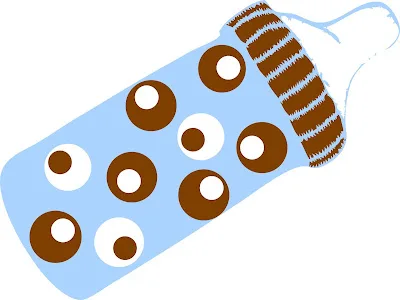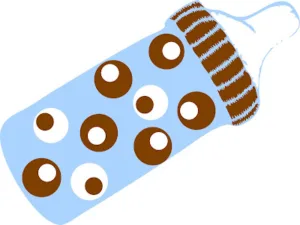Introduction to Paced Bottle Feeding
What is paced bottle feeding?
Paced bottle feeding is a method of feeding infants that mimics the natural rhythm of breastfeeding. It involves allowing the baby to control the flow of milk by holding the bottle horizontally and offering frequent pauses during feeding. This approach helps prevent overfeeding, reduces stress, and supports the breastfeeding relationship between mother and baby.
Is paced bottle feeding only for breastfed babies?
While paced bottle feeding is particularly beneficial for breastfed babies, it can also be used with formula-fed infants. It encourages a slower, more controlled feeding pace that supports healthy digestion and helps avoid overeating, making it a useful approach for all babies.
| Tip | Description |
|---|---|
| Feeding on demand | Feed babies when they show hunger cues, not just when they cry, to ensure a successful feeding experience. |
| Proper positioning | Hold the baby in an upright position with their head elevated, supporting their neck and shoulders to prevent choking. |
| Horizontal bottle | Hold the bottle horizontally with the nipple pointing slightly downward to allow the baby to control the flow of milk. |
| Pausing and burping | Pause frequently during feeding for the baby to breathe and burp them as needed to minimize gas and discomfort. |
| Switching sides | Switch sides halfway through the feeding to promote balanced muscle development and mimic the breastfeeding experience. |
| Choosing the right bottle | Select a slow-flow nipple that closely mimics the natural shape and flow of the mother’s breast to ensure a smooth transition between bottle and breast. |
Benefits of Paced Bottle Feeding
Baby avoids being under- or over-fed
Paced bottle feeding helps babies learn to self-regulate their milk intake. By allowing them to control the flow of milk, they can consume the right amount according to their hunger and satiety cues, reducing the risk of overfeeding or underfeeding.
Less stressful for baby
Paced bottle feeding allows babies to feed at their own pace, reducing stress and frustration often associated with traditional bottle feeding methods. This results in a calmer, more enjoyable feeding experience for both baby and caregiver.
Avoid colic
The slower, more controlled pace of paced bottle feeding can help prevent colic by reducing the amount of air swallowed during feeding. This, in turn, minimizes gas and discomfort in the baby’s digestive system.
Easier pumping for mom
For breastfeeding mothers who pump milk, paced bottle feeding can make it easier to maintain their milk supply. Because babies consume only what they need, mothers can pump more efficiently and avoid wasting precious breast milk.
Supports breastfeeding relationship
Paced bottle feeding helps maintain a strong breastfeeding relationship between mother and baby, as it closely mimics the natural rhythm of breastfeeding. This can make it easier for babies to switch between bottle and breast without developing a preference for one over the other.
May improve health later in life
By teaching babies to self-regulate their milk intake, paced bottle feeding can promote healthier eating habits and potentially reduce the risk of obesity and related health issues later in life.
Teaches self-regulation
Paced bottle feeding encourages babies to listen to their internal hunger and satiety cues, fostering the development of self-regulation skills that can contribute to healthier eating habits throughout their lives.
Eases digestive discomfort
The controlled pace of feeding in paced bottle feeding allows for more efficient digestion and reduces the likelihood of digestive issues such as gas, reflux, and discomfort.

How to Implement Paced Bottle Feeding
When should baby be fed?
Babies should be fed on demand, meaning when they show signs of hunger such as rooting, sucking on their hands, or becoming fussy. Avoid waiting for the baby to cry, as this is a late sign of hunger and may make feeding more challenging.
Baby position
Position the baby in a more upright position with their head elevated, supporting their neck and shoulders. This position allows the baby to control the flow of milk better and prevents choking.
Offer the bottle horizontally
Hold the bottle horizontally, with the nipple pointing slightly downward. This positioning ensures that the baby needs to work to get the milk out, similar to breastfeeding.
Pausing
During feeding, regularly pause to allow the baby to take a break and breathe. This can be done by tilting the bottle downward or removing it from the baby’s mouth for a few seconds before resuming.
Switch sides
Switch sides halfway through the feeding to promote balanced muscle development and mimic the breastfeeding experience.
Ending the feeding
Pay attention to the baby’s cues indicating they are full, such as turning away from the bottle, becoming drowsy, or releasing the nipple. End the feeding when the baby is no longer interested in eating, even if there is still milk in the bottle.
Pro tips for paced bottle feeding
Patience is key – paced bottle feeding may take longer than traditional methods, but it offers numerous benefits for both baby and caregiver. Ensure that caregivers, family members, and childcare providers are familiar with paced bottle feeding techniques to maintain consistency in the baby’s feeding routine.
.

Choosing the Best Bottle for Paced Bottle Feeding
Select a bottle with a slow-flow nipple that closely mimics the natural shape and flow of the mother’s breast. Many brands offer bottles specifically designed for breastfed babies, making it easier to find a suitable option. Experiment with different bottles and nipples to find the one that works best for your baby.
Addressing Common Concerns
Will paced bottle feeding make my baby gassy?
Paced bottle feeding is less likely to cause gas compared to traditional feeding methods, as it helps minimize the amount of air swallowed during feeding. However, if your baby is still experiencing gas, consider burping them more frequently during feeding breaks.
Precautions to take when paced bottle-feeding
Ensure the bottle’s nipple is always filled with milk to prevent air from being swallowed. Avoid forcing the baby to finish the bottle if they show signs of fullness, as this can lead to overfeeding and discomfort.
Final Word on Paced Bottle Feeding
Paced bottle feeding is a beneficial method for breastfed babies and formula-fed infants alike, promoting healthy digestion, self-regulation, and a strong breastfeeding relationship. By following these tips and techniques, you can create a positive feeding experience for both you and your baby.








